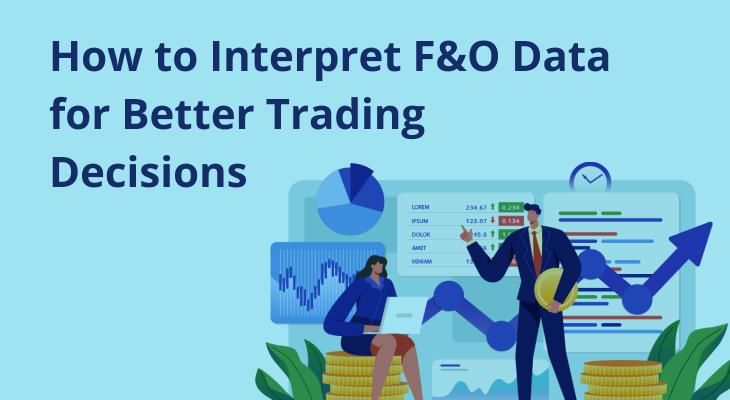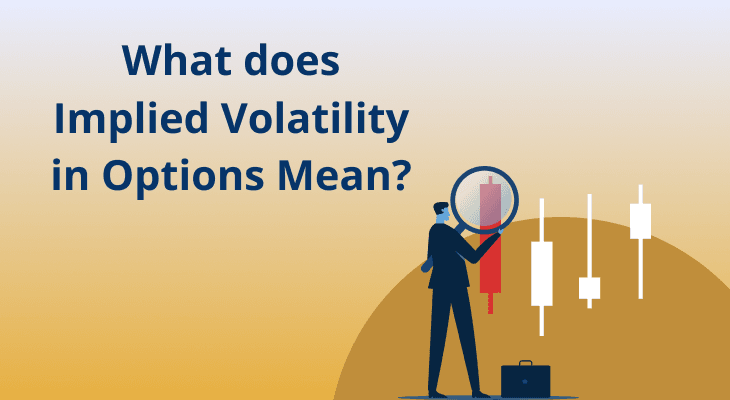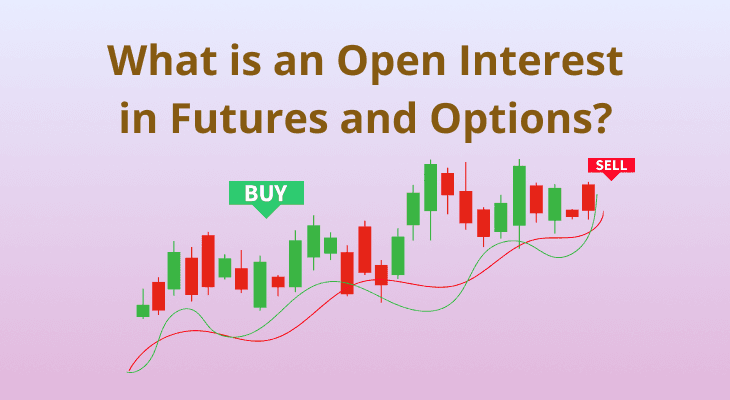
Table of content
- Types of F&O Data You Should Track
- How to Read F&O Data Effectively?
- Open Interest (OI): What It Reveals
- Put-Call Ratio (PCR): Market Sentiment Gauge
- Option Chain Analysis: Key Support/Resistance Zones
- Implied Volatility (IV) and Historical Volatility
- Combining F&O Data with Technical Analysis
- Conclusion
How to Interpret F&O Data for Better Trading Decisions
F&O trading provides chances to earn profits on the basis of market movements. But to be successful in this segment is not merely a matter of market speculation; it is a function of having complete knowledge of various data points. Major parameters such as open interest, put-call ratio, option chain analysis, and implied volatility help understand the market sentiment and future price movement. By proper interpretation of these data points, traders can make wise decisions, manage risks, and improve their trading strategies.
Including F&O data in your trading strategy helps to analyze market conditions in a more complete picture. For example, increasing open interest with rising prices can indicate a strong trend, implying new positions are being opened in the trend direction. A high put-call ratio might imply bearish sentiment, whereas option chain analysis assists in determining crucial support and resistance. Implied volatility assists to clarify the future price movement potential, enabling traders to make more informed and strategic decisions.
Types of F&O Data You Should Track
To navigate the F&O market effectively, it's crucial to monitor specific data points:
- Open Interest (OI): Represents the aggregate number of outstanding contracts, aiding in the evaluation of market liquidity and trend strength. Increasing OI with rising prices indicates a strong uptrend, whereas increasing OI with declining prices may indicate a possible downtrend.
- Put-Call Ratio (PCR): Compares the volume of put options to call options, serving as a gauge of market sentiment. A PCR above 1.0 may indicate bearish sentiment, whereas a PCR below 0.7 could suggest bullish tendencies.
- Option Chain Analysis: Provides a comprehensive view of all available strike prices and their respective premiums, aiding in identifying support and resistance levels. High open interest at specific strike prices can indicate significant support or resistance zones.
- Implied Volatility (IV): Reflects the market's expectations of future volatility, influencing option pricing. Higher IV indicates higher expected volatility, leading to higher option premiums.
- Historical Volatility (HV): Measures past market fluctuations, offering context for current price movements. Comparing HV with IV can help assess whether options are overvalued or undervalued.
By tracking these metrics, traders can gain a deeper understanding of market dynamics and make more informed decisions.
How to Read F&O Data Effectively?
Interpreting F&O data requires a systematic approach:
- Examine Open Interest Patterns: Increasing open interest with rising prices indicates a strong trend, while increasing open interest with declining prices indicates a possible downtrend. Declining open interest with rising prices can indicate a weakening trend.
- Assess Put-Call Ratio: A Put-Call Ratio (PCR) greater than 1.0 can be a sign of bearish sentiment, while a PCR less than 0.7 might reflect bullish tendencies. It is important to compare the current PCR with past values to accurately gauge market sentiment.
- Examine Option Chain: Identify strike prices with significant open interest to determine potential support and resistance levels. A high concentration of open interest at specific strike prices can indicate areas where the market may find support or resistance.
- Assess Volatility Metrics: Compare Implied Volatility (IV) with Historical Volatility (HV) to gauge whether options are overvalued or undervalued. A significant difference between IV and HV may indicate potential mispricing of options.
By combining these analyses, traders can develop a comprehensive view of the market and make strategic decisions.
Open Interest (OI): What It Reveals
Open Interest (OI) is the total number of outstanding derivative contracts, such as options or futures, that have not been settled. It serves as a key indicator of market activity and liquidity.
- Increasing OI with Rising Prices: Indicates that new positions are being opened, suggesting a strong and sustained uptrend.
- Increasing OI with Falling Prices: Signifies that traders are establishing new short positions, pointing to a potential downtrend.
- Decreasing OI: Suggests that existing positions are being closed, which may indicate a weakening trend or a potential reversal.
By analysing OI trends, traders can assess the strength and sustainability of price movements, aiding in more informed decision-making.
Put-Call Ratio (PCR): Market Sentiment Gauge
The Put-Call Ratio compares the volume of put options to call options, serving as a barometer for market sentiment:
- PCR Above 1.0: Suggests a bearish outlook, as more traders are buying puts.
- PCR below 0.7: Reflects a bullish sentiment, as most traders are buying calls.
- Contrarian Indicator: Excessive PCR readings can indicate possible market reversals.
By tracking PCR, investors are able to determine investor sentiment and act in response.
Option Chain Analysis: Key Support/Resistance Zones
An option chain displays all available strike prices and their corresponding premiums, offering insights into market sentiment and potential price movements:
- High Open Interest Strikes: Usually function as resistance or support levels since big positions have a tendency to build up there. A large amount of open interest at one specific strike price indicates that many traders hold positions there, which is an important level to monitor.
- At-the-Money Options: Provide insights into market expectations and potential price targets. These options have strike prices closest to the current market price of the underlying asset, indicating where traders anticipate the asset's price may move.
- Volume Analysis: Helps identify active strike prices and potential breakout points. High trading volume at specific strike prices can indicate strong interest and potential price movements, signaling areas where significant market activity is occurring.
By examining the option chain, the traders are able to identify crucial levels and make educated decisions. Knowing the workings of open interest, strike prices, and trading volume enables traders to gauge market sentiment and detect possible support and resistance areas successfully.
Implied Volatility (IV) and Historical Volatility
Volatility metrics offer insights into market expectations and past price movements:
- Implied Volatility (IV): Reflects the market's expectations of future volatility and influences option pricing. Higher IV indicates that the market anticipates significant price fluctuations, leading to increased option premiums.
- Historical Volatility (HV): Measures past market fluctuations, providing context for current price movements. It is calculated using historical price data and helps assess the asset's price stability over a specific period.
- IV vs. HV: A significant difference between IV and HV may indicate overvalued or undervalued options. If IV is higher than HV, options may be overpriced, while if IV is lower, options may be underpriced.
Understanding these metrics helps traders assess risk and make informed trading decisions.
Combining F&O Data with Technical Analysis
Combining Futures and Options (F&O) data with technical analysis increases trading strategies through giving a broader view of the dynamics of markets.
- Chart Patterns: Recognizing patterns such as head-and-shoulders or triangles assists in forecasting market movements. These patterns, when used in conjunction with F&O data, can validate the strength and direction of trends.
- Indicators: Utilizing tools such as the Relative Strength Index (RSI) and moving averages evaluate market conditions. These indicators, in conjunction with F&O metrics, provide information regarding overbought or oversold situations, facilitating decision-making.
- Volume Analysis: Merging volume patterns with open interest (OI) validates price movements. Growing volume and OI indicate a strong trend, while differences suggest possible reversals.
By merging F&O data with technical analysis, traders can develop a comprehensive approach to trading, enhancing the accuracy of their strategies.
Conclusion
Interpretation of Futures and Options (F&O) data is important to make effective trading decisions. Through the interpretation of important parameters like open interest, put-call ratio, option chain analysis, and volatility indicators, traders can gauge market sentiment, determine trends, and control risks. For example, the study of open interest trends is used to measure the strength of price movements, whereas the put-call ratio indicates market sentiment. Option chain analysis helps to determine potential support and resistance levels, while volatility measures help to assess the risk of options.
Together with these F&O data points, technical analysis adds strength to trading strategies. Technical analysis aids in the determination of entry and exit points, confirmation of trends, and risk management through chart patterns and indicators. By integrating F&O data with technical analysis, traders can develop a comprehensive approach to trading, leading to more informed and potentially profitable decisions. This holistic approach enables traders to navigate the complexities of the market with greater confidence.
FAQ
What is Open Interest in F&O trading?
Open Interest represents the total number of outstanding derivative contracts, such as futures and options, that have not been settled. It indicates market activity and liquidity, helping traders assess the strength of price trends.
How is the Put-Call Ratio calculated?
The Put-Call Ratio is calculated by dividing the volume of put options by the volume of call options. This ratio helps gauge market sentiment, with higher values indicating bearish sentiment and lower values suggesting bullish sentiment.
What does a high Put-Call Ratio signify?
A high Put-Call Ratio shows a dominant bearish sentiment in the market, i.e., there are more buyers of put options. These buyers expect the underlying asset to fall in price. This is a sign of higher demand for protection by investors and traders in the marketplace, a reflection of their conservative view of price action in the future.
How can Option Chain Analysis help in trading?
By analyzing strike prices and premiums in the option chain, traders can identify support and resistance levels, gauge market expectations, and assess potential price movements. It aids in making informed decisions in F&O trading.
What is the difference between Implied and Historical Volatility?
Implied Volatility captures market expectations of volatility in the future, which impacts option prices. Historical Volatility captures past price movements, offering perspective on existing market conditions. Both are important to determine option premiums.
How do I use Open Interest to confirm trends?
Rising Open Interest with increasing prices indicates a strong uptrend, suggesting that new positions are being established in the direction of the trend. Conversely, rising Open Interest with falling prices may signal a potential downtrend.
What role does volume play in F&O trading?
Volume shows market participation and liquidity, aiding in confirming price movements and trends. High volume on the up move of prices reflects strong buying interest, and high volume on the down move of prices reflects strong selling interest in F&O trading.
Can F&O data predict market reversals?
Yes, analyzing changes in Open Interest, Put-Call Ratio, and volatility metrics can signal potential market reversals. For instance, a sudden increase in Open Interest during a price decline may indicate a shift in market sentiment.
Is technical analysis important in F&O trading?
Yes, the integration of F&O data with technical analysis improves decision-making and risk management. Technical analysis assists in determining entry and exit points, whereas F&O data gives information about market sentiment and possible price movements.
Where can I access F&O data?
F&O data is available on stock exchange websites, brokerage platforms, and financial news portals. In India, platforms like NSE India provide comprehensive Option Chain data, including strike prices, premiums, and Open Interest.


